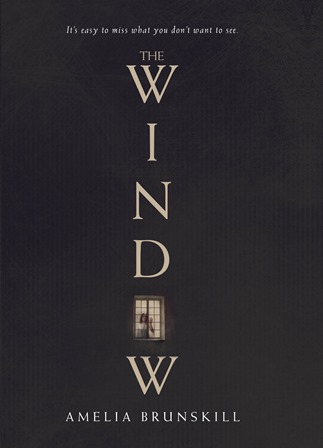Rules in creative writing are few and far between. But when it comes to psychological thrillers, I have three simple, but hard won, tips to help smooth your path.

***
Tip #1: Embrace your manipulative side
In person, I am a terrible storyteller: I inevitably start any potentially exciting anecdote by letting my audience know that—don’t worry— it all worked out fine in the end. In offering this reassurance, I’ve essentially given everyone permission to stop listening. After all, why should anyone pay attention when a peaceable outcome has already been assured?
In psychological thrillers, the last thing you want is for people to zone out, so I go for a different approach. I instead consider how to keep them paying attention, to keep them off balance, unsure of where the story is headed.
For example, the end of a chapter is such a nice, easy place for someone to stretch, look at their phone, check Twitter, get a snack. Maybe come back to the book later. Maybe not. So I think about how to make the endings and beginnings of chapters interesting. Not satisfying. (Satisfying is only for the very end of the book.) I want interesting—a revelation, a discovery, or even just a strange shift in tone that makes the reader question which character they should trust.
I also play with the pacing of the discovery of information. I think about what a reader wants to know and how to not give it to them (and ideally without resorting to having characters’ cell phones run out of batteries in the middle of conversations all the time). Do I give out some answers along the way? Absolutely; a reader should get answers sometimes—they’ve earned them by continuing to read—but only after I’ve sown yet more questions, and perhaps a few red herrings, into the mix.

Tip #2: The everlasting glory that is poor but understandable decisions
Is there anything so deliciously agonising as watching someone making a poor but understandable decision? The amateur detective who absolutely should not go into that basement, should not trust that strange person they just met, should not start stalking their track coach…and yet does it anyway?
It’s important that the decisions are poor, because seeing people make good decisions tends to be incredibly boring (I’m so proud of my friends who eat healthily and exercise regularly, yet my interest in hearing the details of those successes is quite, uh, limited). The decisions being understandable is equally important, because otherwise both the decisions and the characters would simply be irritating.
The key to making terrible decisions understandable comes in having the characters be in a heightened emotional state. When stressed, when panicked, when grieving, it is much easier to make an unthinkable choice. In a way, it’s simply an elevated version of what we all often do: run out in the street without looking both ways because it’s raining and the bus is coming and we don’t want to miss it, pick a fight with a friend when we’re really mad at our boss, decide not to check who is at the door before ringing them up because we’re expecting a really important package. If your characters are in a heightened emotional state, it makes sense that they might not make coolly rational decisions, and so instead they are free to make horribly, wonderfully poor ones.
Tip #3: Connectivity: When one thing leads to another, preferably all in a horrible downward spiral
Manipulation and poor-but-understandable decisions are important, but there also needs to be connectivity: the object that leads to a person that leads to a place that leads to… an answer.
If this can occur organically in a project, that’s fantastic. Sometimes plot points may logically flow, but other times you may have to work at it. You may know that for your plot to function as intended, your character needs to find out things at a certain time, in a particular place, but it can be difficult figuring out how to get them there without simply have them showing up in abandoned buildings, or morgues, or dark isolated fields, for no apparent reason.
So, I often think back to a playwriting class I once took where the instructor made us write out ideas in groups of ten—ten reasons why X might have happened, ten locations in which a scene could take place, ten ideas for characters. I find this exercise to be very helpful with connectivity: While my first idea about how to link together two scenes often isn’t very good, by the time I’ve forced myself to come up with nine additional ones, there’s usually at least one good one that I can use, and it all begins coming together.
There they are, my three tips for writing a psychological thriller: manipulation, plenty of poor-but-understandable decisions, and connectivity.
And if your story falls into place using them, tell me about it.
Just don’t give away the end first—keep me in suspense.
Amelia Brunskill's debut young adult novel THE WINDOW comes out on April 3rd 2018. Follow her on Twitter at @ameliab or visit her website at ameliabrunskill.com
Thanks for the tips. I have started a thriller that has two main characters that are linked to past but are destined to meet again in the future. I need a third character to be the go between but won't get to meet either of them at any point. Your tips will me to keep a certain pace and interest going on. Thanks